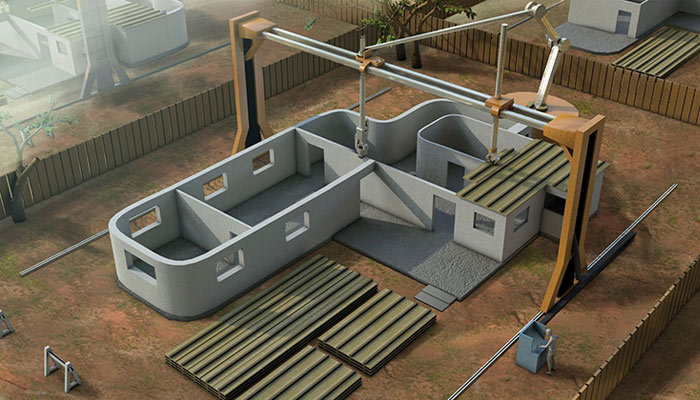As we progress through the evolving domain of engineering, one discovery stands notably in the sector of infrastructure: 3D printing. This groundbreaking method is revolutionizing the manner buildings and edifices are conceived and constructed, introducing a new age of efficiency, environmental responsibility, and originality.
Revolutionizing Construction: One Sheet at a Time
The implementation of 3D fabrication in construction presents numerous transformative benefits. Foremost among these is the drastic minimization in material waste. Classic building techniques typically produce in notable surplus substances that add to environmental waste. In comparison, 3D manufacturing applies a precise stratum-by-stratum approach, consuming only the required amount of resource and thus limiting surplus greatly.
Another significant perk is the immense decrease in construction period. Projects that traditionally demand months can be completed in a segment of the timeline with 3D fabrication innovations. This time reduction is due to the self-operating nature of 3D machines that can work continuously without worker involvement, considerably shortening complete project schedules.
Moreover, 3D fabrication unlocks possibilities for constructing sophisticated, custom designs at no additional cost. The versatility of 3D devices allows for elaborate frameworks and forms to be created that would either be highly costly or inconceivable to accomplish with conventional building approaches. This function not only improves structural beauty but also allows engineers to optimize layouts for superior efficiency and longevity.

Reducing Costs and Improving Reachability
Cost minimization is yet another significant advantage delivered by 3D fabrication in infrastructure. By minimizing manpower expenses and slashing the duration necessary to finish projects, the complete budget associated with constructing frameworks is lowered. Moreover, low-cost 3D fabrication units are getting more available, making this technology accessible to emerging firms and independent creators enthusiastic to explore its capabilities.
The affordability of these devices also paves the way for advancement in associated fields such as garment printing. While chiefly known in infrastructure sectors, the scope of 3D fabrication extends into multiple domains including fashion. Here, creators experiment with 3D fabricated attire, challenging artistic limits and revolutionizing textile manipulation while benefiting from minimal production expenses.
A Sustainable Vision Powered by Innovation
Sustainability is another foundation of this method’s appeal in the building field. 3D fabrication encourages a environmentally friendly strategy to building by reducing substance excess and energy expenditure. Moreover, it enables the use of sustainable resources like reclaimed polymers or blended blends, which additionally decreases the ecological footprint of this historically heavy-polluting sector.
The international movement in favor of sustainable methods finds a reliable supporter in 3D manufacturing technologies, possibly reshaping how building policies and standards are established moving ahead. By integrating these advanced methods, the construction sector steps closer to realizing greener operational models.
Transforming Visions to Reality
Imagine community hubs in low-income areas being constructed within a short time to address immediate demands or architects crafting wonders reflecting environmental formations that blend effortlessly into their landscapes – such concepts are not merely theoretical but are fast becoming feasible through 3D fabrication.
While these achievements signify just the beginning, they suggest a time where development integrates harmoniously with both human dreams and ecological care.
If we continue on this path, building will not only represent the physical creation of spaces but also symbolize a commitment to forward-thinking approaches and sustainable practices. Connecting artistry with functionality, 3D fabrication stands poised to reshape our physical environment in manners we are just beginning to understand.
Through constant advancements and an acceptance of these futuristic approaches, our developed spaces will undoubtedly transform into reflections of human brilliance driven by the exactness and boundless potential of 3D manufacturing.
For details about may in soi nhua go to our new internet page: click for info
